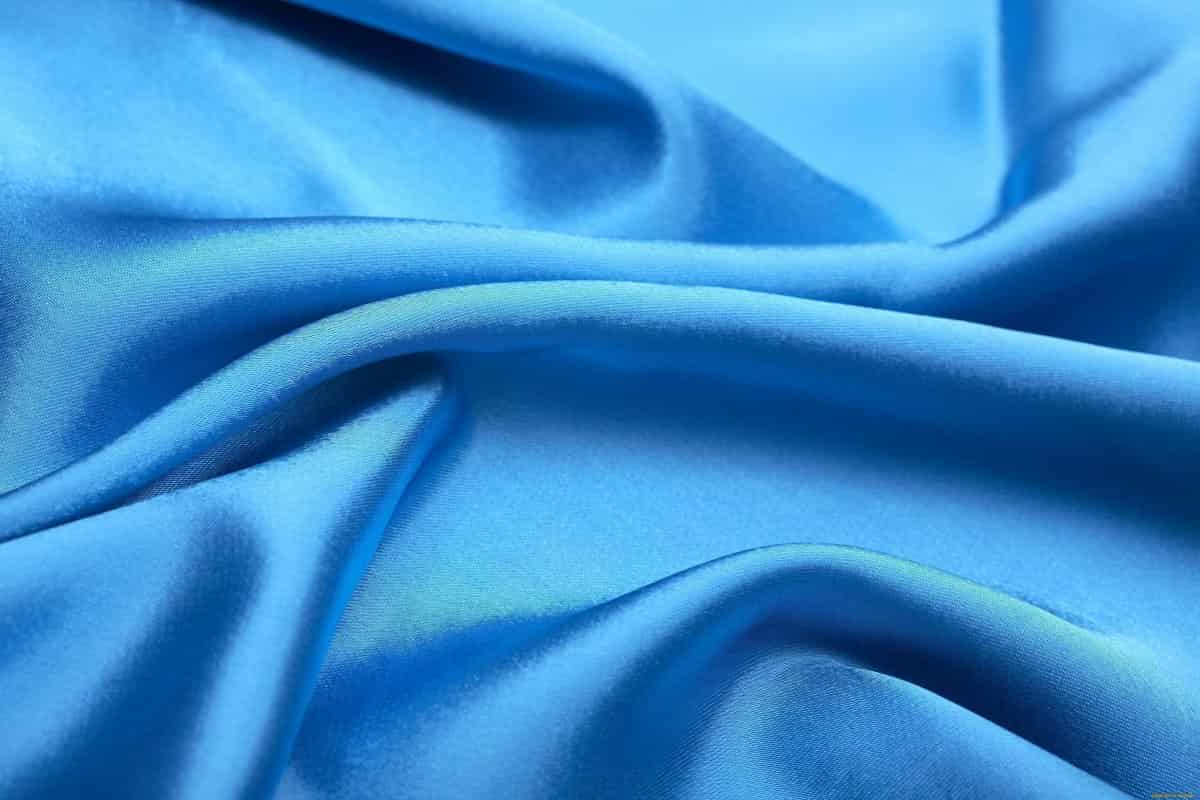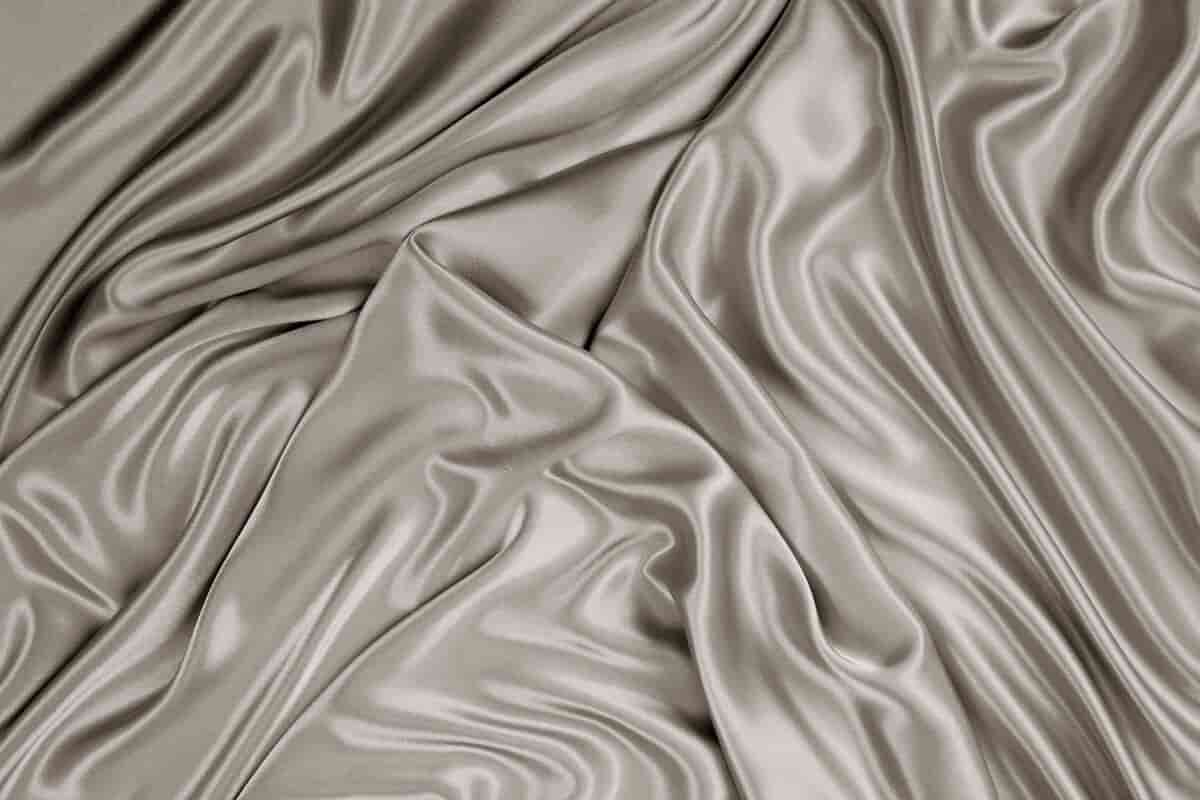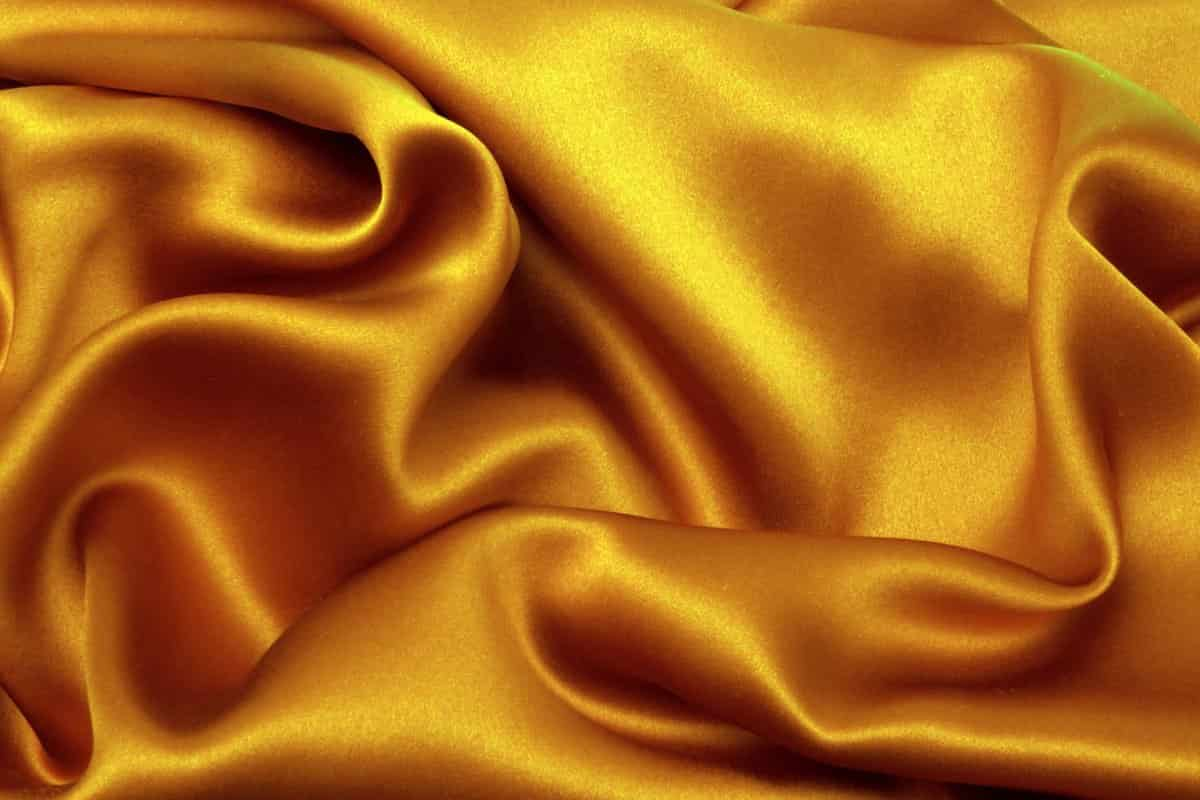What is the best satin fabric?
Are you on board to discover whether the satin fabric is considered sheer or not? We suggest you learn about the characteristics of satin fabric and its applications, different types, and advantages and disadvantages.
satin fabric dress
Did we make you curious? Then keep reading!
The smooth, shimmering fabric known as satin is used for more than simply elegant dresses.
There are numerous fabric kinds that can be woven with a satin weave, and these textiles have purposes besides gowns and bridesmaid dresses.
The term "satin" relates to the weave rather than the fabric, and most satin fabrics have a smooth, shiny finish that can be seen on anything from evening purses to upholstery.
What is the satin fabric?
One of the three main textile weaves, along with twill and plain weave, is satin.
The satin weave produces a glossy, supple, elastic fabric with a lovely drape.
Satin fabric is distinguished by having a duller surface on one side and a smooth, glossy shine on the other.
This is a result of the glossy satin weaving process, and a satin weave can take many different forms.
So, with that being said could you tell that satin is not a transparent see-through fabric?! Yes, it is not categorized as a sheer fabric.
But this gorgeous fabric has an amazing appearance and it has a lot of stunning features and characteristics that we intend to tell you about in the rest of this article.
What are satin's origins?
Silk was the only material used to create satin in medieval China.
Satin got its modern name from the Chinese port city of Quanzhou, which in medieval Arabic was known as Zaitun.
Through the Silk Road, both the weaving and fabric-making processes spread throughout the Middle East.
Satin was created for the first time in the West in Italy in the twelfth century, and by the fourteenth century, it had spread throughout all of Europe.
In fact, the upholstery on a large portion of the furniture in the Palace of Versailles is satin.
A satin weave: What is it?
Four or more weft threads placed over one warp thread, or the reverse, four or more warp threads placed over a weft thread, define a satin weave.
When weaving, the weft thread or threads are weaved over and beneath the warp threads, which are maintained immobile on the loom.
What kinds of satin weaves are there?
Long, continuous fibers are used to weave satin, which is determined by the filament's length rather than the fiber itself.
Silk, which is a length of continuous thread extracted from a silkworm's cocoon, was originally used to create satin.
Polyester and rayon, both of which may be produced in the form of long filaments, can also be used to make contemporary satin.
There are numerous varieties of satin weaves:
- Satin weave in a 4 harness.
- The weft thread crosses three warp threads in the 4/1 satin weave before tucking under one.
- Compared to a plain weave, where the warp and weft yarns cross over at a 1/1 ratio, this is more elastic and has greater stretch.
- Satin weave 5 harness.
- The only difference between this and the four harness variety is that the weft thread crosses over four warp threads before passing underneath one.
- Satin weave 8 harness.
- The weft thread crosses seven warp threads before tucking under one to create the most adaptable type of satin.
What characteristics Does the Satin fabric have?

satin fabric price
Plain weave fabrics are less flexible than satin weaves, which are renowned for their shiny sheen and lovely drape.
Here are a few features of satin:
- Shiny front.
- Satin has an extremely plush, velvety feel.
- A lovely draping.
- Satin weaves produce a silky and effortless drape that makes them perfect for evening wear and curtains because of the concentration of such fibers and the fabric's pliability.
- Satin is significantly stronger than many other plain weave fabrics because it is made of long filament threads that are woven very tightly.
- Wrinkle-resistant.
- Compared to other textiles, satin is less likely to wrinkle, and thicker satins are less likely to do so.
Satin fabric, however, also has several drawbacks, such as:
It easily snags.
In a satin weave, the threads can readily tangle, leading to unsightly snags.
A challenge to work with.
Because satin is supple and slippery, sewing with it can be challenging.
What types of satin fabric can you find
There are various sorts of satin, and they differ depending on the fibers used in the weave and the specific satin weave.
A few instances of satin weaves are as follows
- Vintage satin.
- Antique satin is woven in either a 5 harness or 8 harness pattern using weft threads that are yarns that have been irregularly spun.
- Satin baronet.
- This type of satin is very glossy and is made with cotton weft and rayon warp threads.
- Charmeuse satin, which derives its name from the French word for "charm", is incredibly light and has an easy drape.
- It also possesses the classic features of satin, including a lustrous front and a dull back.
- Crepe-back silk.
- Crepe back satin has a reversible crepe texture on one side and a beautiful satin finish on the other.
- Duchess satin.
- The material duchess satin is thick.
- It is used for gowns and is typically dyed in solid colors.
- It is stiffer and less lustrous than ordinary satin
- This type of satin is typically made of silk or rayon and is extremely thin and highly reflective.
- This is a shorthand for polyester-thread-woven satin.
- Satin slippers.
- This satin is a medium-weight, tightly woven fabric that is used for garments, shoes, and accessories.
Uses for satin fabric
Thanks to the different ways the weave is employed, satin has a wide range of functions, from fashion to interior décor.
- Due to its lovely drape and shiny feel, satin is a go-to fabric for party dresses and wedding dresses.
- One of the Palace of Versailles' decorative furniture pieces was made of satin, which is still used today for chair upholstery, pillow covers, and other different types of cushioned furnishings.
- Bed linens.
- Satin is frequently used for bed linens because of the flexible and supple weave.
- Satin is a popular material for shoe designers, used in anything from ballet slippers to high heels.
The distinction between satin & sateen

satin fabric near me
Short-staple fibers are used to create sateen, a fabric with a satin texture.
As opposed to lengthy continuous threads like silk, which are known as filament fibers, staple fibers are short fibers.
For instance, cotton produces short strands that, when woven similarly to how satin is, create cotton sateen.
The distinction between silk & satin
The fabric is known as satin, and silk is the name of the fiber.
As a result, silk fibers can be woven into satin, but they can also be used to create other patterns that aren't considered satin.
Contrarily, satin can be produced with any long filament fiber, not simply silk.
The satin fabric advantages:
- Satin has a sumptuous appearance and feel; this is frequently its major benefit and the reason people choose it.
- It is very adaptable, as evidenced by the several satins and sateen varieties noted above, and it has the potential to be durable thanks to the taut fabric's strength relative to many plain weaves.
- Additionally, satin resists wrinkles, especially thicker satins.
- The perfect blend of a soft, luxury look and feel and a colorful pattern printed on the surface is achieved by printing high-quality, vibrant colors and images on satin, another substance.
The Satin fabric disadvantages:
- There are benefits and drawbacks to every cloth, and no material may be the perfect option for every activity.
- Because of its slick, slippery feel, satin can be challenging to sew and deal with.
- Due to the way the yarns interlace and produce those larger lines in one direction, satin can also snag.
What materials are used to make satin?
It is a satin weave if it is applied to a filament fiber (continuous fiber) like silk, nylon, rayon, or polyester.
A few purists still maintain that satin must only be made of silk.
Although silk is used, the fabric does not necessarily become satin; the weave is crucial.
The fabric would be referred to as sateen if a satin weave was applied on a short-staple fiber, like cotton.
Different types of satin fabric
This lovely cloth comes in a variety of types and weaves.
The weft thread crosses three warp threads in a 4 harness satin weave before passing underneath one.

satin fabric on line
This design becomes four and one with a five harness weave, and seven and under one with an 8 harness satin weave.
Satin can be fashioned into the following 10 different types:
The Ten are not all utilized equally often; some are primarily employed for specialized activities.
- Antique: This heavy, antique fabric has a low sheen and is frequently used for drapes and upholstery.
- Baronet: Made of cotton and rayon, this fabric is very opulent.
- Charmeuse: On one side, it is quite glossy; on the other, it is drab.
- Making clothes is a common activity.
- Crepe-back: Crepe-back, another fabric that is frequently used in dressmaking, is reversible so that either the stain weave or the crepe weave can be seen
- Duchess: Duchess keeps its shape nicely and can be dyed in solid colors, making it ideal for bridal wear.
- It is rigid and quite weighty.
- Lucent: A double-faced, highly lustrous, shiny sateen fabric.
- It is used to make bags, clothing, and accessories for the fashion industry.
- Messaline: Like other materials, messaline is frequently used in clothing production.
- It is delicate and light.
- Monroe: Monroe is a particular medium-weight sateen-fronted weave that is frequently used to make bags and accessories.
- Panne: Panne has a very high degree of sparkle and is great for dressmaking and evening wear.
- This lustre is produced by the finish using hot roller pressure.
- Slipper: Lightweight and has a matte finish.
- This fabric, which has a cotton reverse, is frequently used in craft projects.
How do you take care of satin? A guide on satin fabric care
The sort of satin you have will determine how you should wash and maintain it.
Satins manufactured of synthetic materials and cotton sateens can be washed at home, but silk satin requires dry cleaning.
The following general rules should be followed when washing your satin products at home:
- Use cold water and a mild detergent when washing by hand or on the delicate cycle.
- Satin can easily lose its shape, so avoid wringing the item when drying it.
- Instead, hang dry the item.
- Avoid drying satin in a dryer.
- Rather, spread out to dry on a fresh towel.
If washed, does satin shrink?
Depending on the fiber content, satin may shrink in the wash, but when washed properly, it keeps its sheen, form, and size.
It will keep its form and size if you use cold or lukewarm water.

satin fabric uk
Your satin fabric is not damaged by low temperatures.
Never subject satin to high heat if you want it to last you for a long time.
If you have a beloved satin item or two, you may want to take it to be dry cleaned because that is the safest method for ensuring fabric maintenance.
Please adhere to the cleaning directions on the care tag if you must clean it at home.
Use cool or cold water to wash it with your hands, as is frequently advised.
Final thoughts
You should treat satin like the royal material that it is because it is.
The nicest aspect is that if you treat it gently, it repays your kindness by lasting a long time.
Satin fabrics have a tempting quality that is easy to adore, and a satin garment is where the weave is at its most effective.
The satin garment is a perennial favorite for individuals who wish to stand out because of its softness, toughness, breathability, and stunning, movable drape.
Satin is a flexible weave that always adds a little additional glitz to red carpet outfits, wedding gowns, slip dresses, and little black dresses.

How useful is this article to you?
Average Score
5
/
Number of votes:
1





